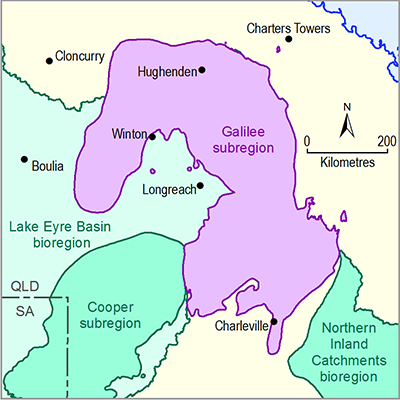The prediction of receptor impact variables at assessment units occurs in companion product 3-4 for the Galilee subregion (Lewis et al., 2018). Several gaps and limitations to the development of receptor impact models for the Galilee subregion are identified. Important limitations include the availability of experts with local knowledge for some landscape classes and elicitations, the inability to construct a receptor impact model for the potentially important ‘Springs’ landscape group, important knowledge gaps surrounding the connectivity between groundwater and surface water systems (both connectivity within landscape classes and groups of classes, as well as between ecosystems) in different parts of the subregion, and constraints to the availability of surface water modelling across the assessment extent.

Product Finalisation date
- 2.7.1 Methods
- 2.7.2 Overview
- 2.7.2.1 Introduction
- 2.7.2.2 Potentially impacted landscape groups
- 2.7.2.3 'Springs' landscape group
- 2.7.2.4 Streams landscape groups
- 2.7.2.5 'Floodplain, terrestrial GDE' landscape group
- 2.7.2.6 'Non-floodplain, terrestrial GDE' landscape group
- 2.7.2.7 Outline of content in the following landscape group sections
- References
- Datasets
- 2.7.3 'Springs' landscape group
- 2.7.4 Streams landscape groups
- 2.7.5 'Floodplain, terrestrial groundwater-dependent ecosystem' landscape group
- 2.7.6 'Non-floodplain, terrestrial groundwater-dependent ecosystem' landscape group
- 2.7.7 Limitations and gaps
- Citation
- Acknowledgements
- Contributors to the Technical Programme
- About this technical product
